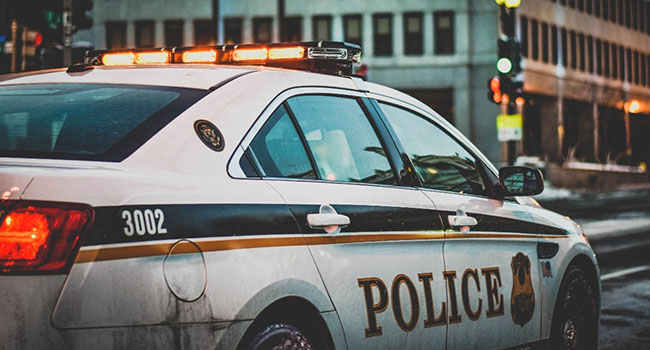 The wave of protests across the United States in response to the death of George Floyd follows a lengthy list of protests against police misconduct.
The wave of protests across the United States in response to the death of George Floyd follows a lengthy list of protests against police misconduct.
The list of misconduct includes:
- Rodney King, beaten by police on a freeway after a high-speed chase in Los Angeles (1991);
- Abner Louima, a Haitian immigrant sodomized in a New York police precinct bathroom (1997);
- Amadou Diallo, shot outside his home in New York (1999);
- Oscar Grant, shot in the back of the head while lying flat, head down on a rapid transit platform in Oakland (2009);
- Eric Garner tackled and choked by a New York officer for selling illegal cigarettes (2014);
- Michael Brown fatally shot while unarmed in Ferguson, Mo. (2014);
- Walter Scott fatally shot after being stopped for a broken brake light in North Charleston, S.C. (2015);
- Freddy Grey, arrested with a knife in his pocket, later died from severe spinal injury sustained during transport to a Baltimore police station (2015);
- Philando Castile shot during a traffic stop in Minnesota while reaching for his identification while his girlfriend live-streamed the confrontation (2015);
- and now George Floyd in Minneapolis.
And this is only a partial list!
Despite enormous strides made during the past two decades, particularly with the adoption and expansion of community policing across the world, there was much that police leaders could have done to avert deteriorating trust in policing, police legitimacy and race relations across the U.S.
They didn’t, so much of the current failure rests squarely on the shoulders of American police leadership.
There have been significant advances in the hiring and promotion of members of visible minorities, particularly Blacks, into the ranks of police services across the U.S., up to and including chiefs of major city police services. But suspicion, abuse of police powers, and misuse of discretionary enforcement against Blacks seems to continue to be systematic and widespread.
Yes, policing in the U.S. is difficult, firearms are rampant, inequality is systematic and historic. Yes, policing in the U.S. has been a war on drugs, terrorism, immigration and gangs, and on a scale far greater than in any other country.
The American criminal justice system has 1,833 state prisons, 110 federal prisons, 1,772 juvenile correctional facilities, 3,134 local jails, 218 immigration detention facilities and 80 Indian Country jails, as well as in military prisons, civil commitment centres and state psychiatric hospitals.
According to the World Prison Brief, there are more than 2.1 million prisoners in the U.S. China holds almost 1.7 million prisoners (plus an unknown number in pre-trial detention and other forms of detention). Brazil has almost 700,000 prisoners, the Russian Federation almost 600,000, and there are around 400,000 prisoners in both India and Thailand. Indonesia, Turkey and Iran each have around a quarter of a million prisoners.
The country with the highest prison population rate – the number of prisoners per 100,000 of the general population – is the U.S. (655 per 100,000), ahead of El Salvador (604), Turkmenistan (552), Thailand (526) and Cuba (510).
According to the National Association for the Advancement of Colored People (NAACP), Blacks are incarcerated at more than five times the rate of whites. The imprisonment rate for Black women is twice that of white women.
Arresting its citizens is a big business in the United States and police chiefs have been systematically complicit.
The violent protests across the U.S. ignited by the arrest of Floyd are largely directed against police services. And while the anger is aggravated by the underlying inequalities and systematic barriers, it’s police action that has too often been the catalyst of violent national protests.
There’s no denying the challenges police confront on a daily basis, resulting from policies and conditions far beyond the purview of policing. Poverty, unemployment, racism, mental illness and myriad of other social issues all remain outside of the purview of policing, and yet policing is the only 24-seven social service available to respond to the consequences of all social ills.
These are nearly insurmountable challenges. Nonetheless, police officers are sworn to protect and serve their communities, fairly and with compassion. And the majority of police officers do exactly that, often at great peril and self sacrifice.
However, there have been too many officers across the U.S. who have been the cause of the racist application of abuse, up to and including deadly force. There have also been too many officers complicit by their lack of intervention during misconduct by colleagues.
These are undeniable signs of deeper levels of bias, racism and tolerance for abuse of police powers within their organization. These are also signs of a leadership out of touch with the organizational culture under their command, their inability to bring about cultural change, or wilful blindness to systematic issues that seem to be so evident.
Police officers swear to serve and protect, receive extensive training in public safety, generally have first-aid training, understand criminal law, and enjoy privilege and authority. They have use of force training and discretion on the use of their authority.
And yet even in cases when it has been clear that there’s an abuse of office, officers receive greater tolerance and discretionary consideration than would an ordinary citizen.
But officers should be held to a higher accountability, by virtue of their training and office.
Any chief or mayor who’s out of touch with the cultural propensity for bias, for the signs of abuse of authority, or privilege by any member of their police service has failed.
Officers who prey on victims, fail to intervene when they observe misconduct or are so unprepared as to act in cowardice are the responsibility of the department to which they belong, the responsibility of their colleagues, and of their supervisors, commanders and chief.
There’s no place for cowards, racists, sociopaths or murderers in a police department. And yet such officers seem to be detected with alarming regularity.
The majority of police officers are exceptional public servants who attempt to do their best under unbelievably challenging conditions.
They have been betrayed by officers involved in these shocking incidents and by leadership that fails to prevent cultures that condone abuse of force, bias and racism.
Anil Anand is a research associate with the Frontier Centre for Public Policy. Anil served as a police officer for 29 years, took part in the Ipperwash Inquiry and has worked with Interpol.
Anil is a Troy Media Thought Leader. Why aren’t you?
The views, opinions and positions expressed by columnists and contributors are the author’s alone. They do not inherently or expressly reflect the views, opinions and/or positions of our publication.


